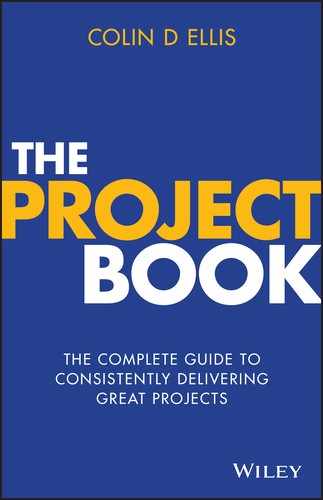PROJECT MANAGEMENT
SUMMARY
So there you have it. Hands up if you thought project management involved all of these things? Okay, seven of you ... that’s a start.
Of course, reading the first section of this book was the easy part. You now have to go away and put all of these ideas into practice, but here’s the rub: the triumvirate of leadership, culture and methods must be applied in equal measure across the life of a project for you to be successful as a project leader. And it’s a balance you need to get right.
Too much leadership
Project leadership, done well, is a great thing to behold. It’s like Simon with Garfunkel, Morecambe with Wise, Hall with Oates and, er, Turner with Hooch. It picks us up, it’s energetic, it gets us involved, it tells us we’re great and we need to get better still. It’s honest, forthright and inspiring. However, if that charisma isn’t backed up with the knowledge of how to get things done, you’ll soon hear, ‘Graeme is a lovely guy, but ...’
If you place too much emphasis on charismatic leadership and not enough on the culture or mechanisms for productivity or progression, in no time at all you’ll find yourself as ‘Head of Special Projects’.
Project leaders build cultures and are aware of the processes and tools available. They then make good use of both to capture the information necessary to support the successful completion of milestones.
‘Charisma is a sparkle in people that money can’t buy,’ says Marianne Williamson in her book Elements of Leaders of Character. ‘It’s an invisible energy with visible effects.’ But without building a culture and the know-how of techniques and process to guide the team through delivery, that sparkle will lose its lustre very quickly.
Too much method
While too much leadership can be bad, what we see more of in project management is too much method. Unfortunately, for the past 15 years method has been used as a silver bullet by organisations (and many continue to do so), despite the frequent failure of waterfall projects. We are now witnessing the same results with agile projects. I read a book recently that said that if you apply agile principles to every project, you’ll be successful every time. There is no evidence whatsoever to support this claim, but much to suggest the opposite. The Standish Group’s 2015 Chaos Report, for example, noted that only 39 per cent of agile projects were successful.
To be fair to those who promote these methods, they go to great lengths to point out that they don’t work in isolation. After all, a fool with a tool is still a fool. Yet this proviso goes unheeded time and again. In my many project leadership roles, I would frequently come across project managers more interested in the structure of the templates than the people. That way failure lies.
Too much culture
As strange as it may seem to many (especially those working in environments that drain their creativity), too much culture can also be a bad thing. And in some instances, nothing brings a team together like a bad project manager. The culture is formed through a shared disaffection or lack of respect for the very person who should be building the team. In these instances, the team starts working around the project manager rather than giving them or their line manager feedback that they are not performing the role effectively.
In rare cases, where a team has worked together before, there can also be too much familiarity, and that’s a tough one for a project manager to handle. That camaraderie is a great foundation for project culture but what worked before won’t always work again. It’s a mistake to assume that the team can reuse the same approaches regardless of the project and the person leading it.
Get the balance right
Many organisations, individuals and consultancies still think too simply about how to develop great project management, which is why practitioners like me find it hard to convince them that achieving it is more than just a week-long training course.
Great project leadership is no accident. It requires time, effort, feedback, mistakes, self-awareness, education and change. It can be achieved aged 18 or 80, and it never stops evolving. Getting the balance right, and successfully delivering every project you lead, is your challenge as a project leader.
I believe you can do it — you should too.
